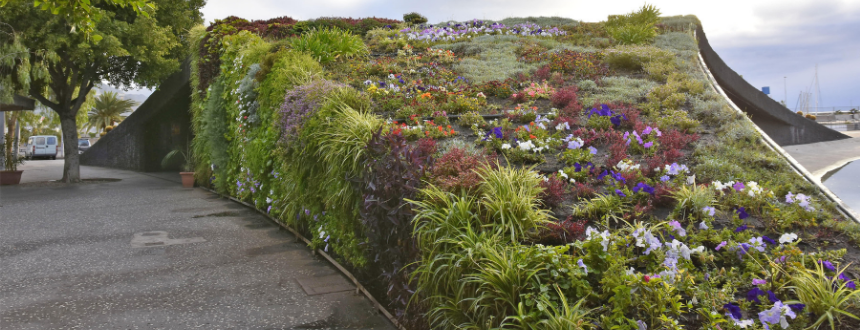
A green roof or rooftop garden is a vegetative layer grown on a rooftop. Green roof systems include several different layers, including structural support, vapor barrier, thermal insulation, root barrier, drainage layer, filter membrane, growing medium, and vegetation. Use compost-amended soil for the growing medium and mulch for erosion control.
Benefits
- Reduce heat island effect
- Provide shade
- Improve aesthetics
- Reduce temperature of roof surface by up to 40 °F below conventional roofs
- Reduce city-wide ambient air temperatures by up to 5°F
- Reduce energy use
- Reduce stormwater runoff
- May qualify for credits under green building rating systems
Limitations
- Existing structural support may not be sufficient
- May require water supply
- May increase insurance cost
Design Considerations/Plans and Details
Design Guidelines and Maintenance Manual for Green Roofs in the Semi-Arid and Arid West
Resources
- Reducing Urban Heat Islands: Compendium of Strategies
- USEPA – Information on Green Roofs
- Green Roofs for Healthy Cities (non-profit industry association)
- USEPA – Estimating the Environmental Effects of Green Roofs
- USEPA – Green Roofs for Stormwater Runoff Control
- USGBC – LEED v4.1 BD+C rating system
Research
- Carter, Timothy L. and Rasmussen, Todd C. Hydrologic Behavior of Vegetated Roofs. Journal of the American Water Resources Association (October 2006) 1261-1274.
- Mentens, Jeroen et al. Green roofs as a tool for solving the rainwater runoff problem in the urbanized 21st century? Landscape and Urban Planning 77 (2006) 217-226.
Resources
For more information contact: Organic Materials, organics@calrecycle.ca.gov

